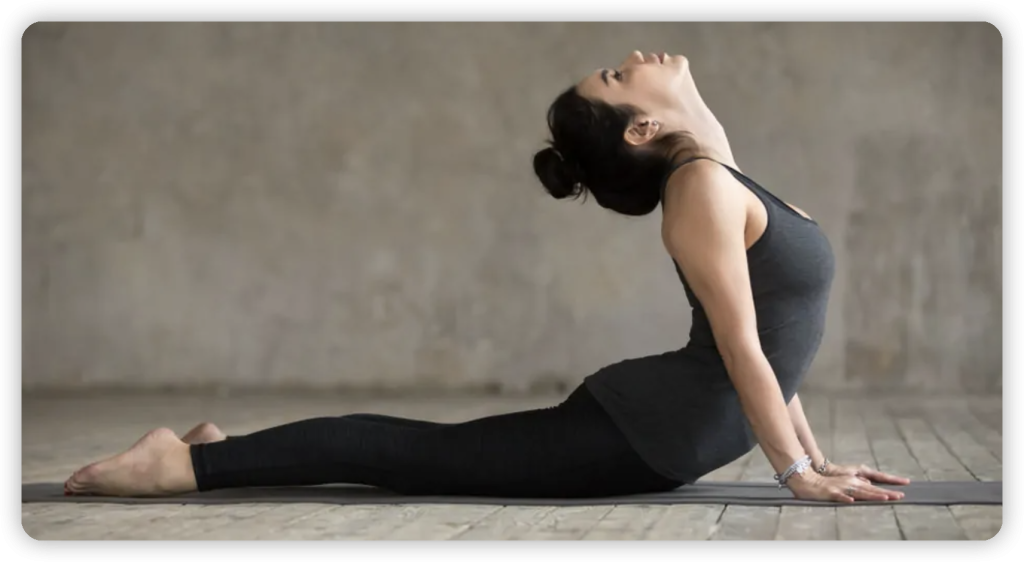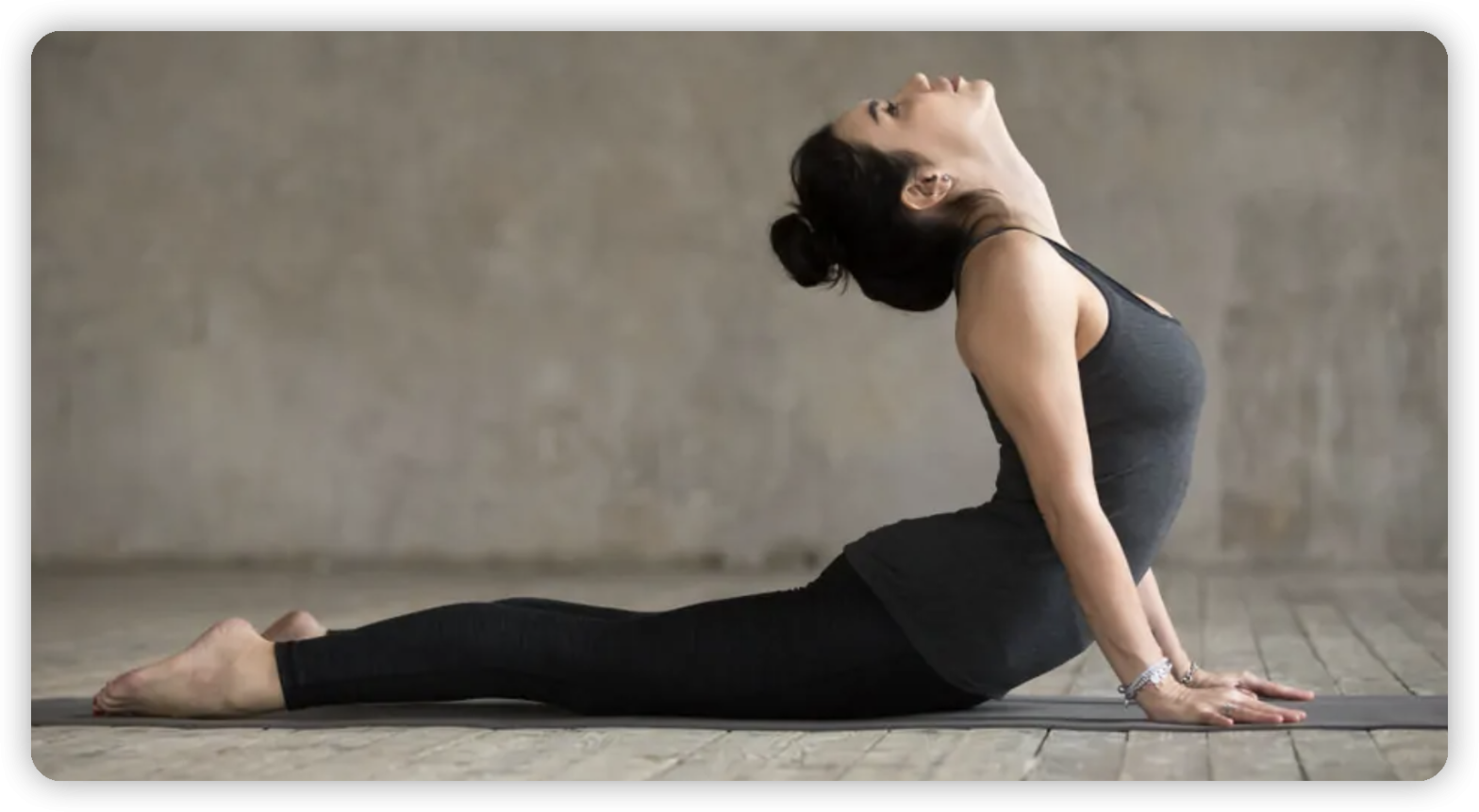The Cobra Pose, known in yoga as Bhujangasana, is a beginner backbend that rejuvenates the spine and can be deeply invigorating for the entire body. Here’s a refined breakdown of the pose:

Benefits:
- Strengthening the Spine: This pose strengthens the muscles of the spine, which can be especially beneficial for maintaining an erect posture.
- Chest Opener: Cobra opens the chest, shoulders, and abdomen, which can help improve respiratory capacity.
- Abdominal Stretch: The pose stretches the muscles in the abdomen, which can be beneficial after prolonged sitting.
- Asthma Relief: By opening the chest and shoulders, it can be therapeutic for asthma sufferers.
Instructions:
- Starting Position: Lie face down on the mat, with legs extended straight behind. The tops of your feet should be flat on the floor.
- Hand Placement: Place your hands beneath your shoulders. Keep elbows hugged in towards your body.
- Engage Lower Body: Press your thighs, pubis, and the tops of your feet firmly into the floor.
- Lift: As you inhale, begin to lift your chest off the floor by pressing into your hands and using the strength of your back muscles. Only rise to a height that is comfortable and where you can maintain connection with your legs and pelvis on the ground.
- Pelvic Alignment: Press the tailbone towards the pubis, engaging the muscles of the buttocks lightly but without hardening.
- Shoulder Position: Roll the shoulders back and down, away from your ears. Draw shoulder blades towards each other, opening the chest.
- Gaze: Keep the neck neutral, with your gaze directed at the floor a few feet ahead of you or straight ahead, depending on the flexibility of your cervical spine.
- Duration: Hold the pose, taking deep breaths for 15 to 30 seconds.
- Release: Exhale as you gently lower your chest and forehead to the floor.
Cautions:
- Headaches: Those with active headaches should refrain from practicing this pose.
- Pregnancy: Pregnant individuals should avoid deep backbends.
- Carpal Tunnel Syndrome: Due to the weight-bearing nature of the pose on the hands, it can be challenging for those with carpal tunnel.
- Back Injury: Those with an active back injury should approach this pose with caution or avoid it altogether.
Always ensure you’re warmed up before practicing backbends and consider following up with a gentle counterpose, like Child’s Pose, to relax the spine after coming out of the Cobra Pose. As always, it’s vital to consult with a yoga instructor or healthcare professional to ensure the pose is suitable for your individual circumstances.

